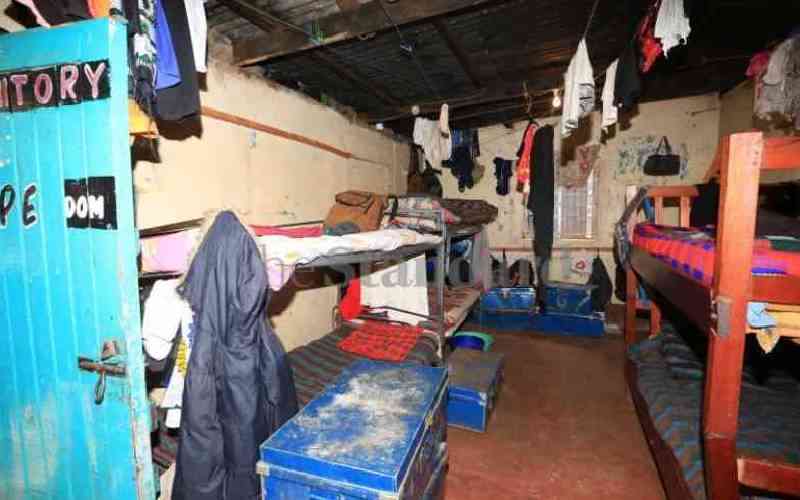By MACHARIA KAMAU
Kenya: Kenya is walking a thin line with demand for electricity outstripping supply. The growth in demand is however seen in a few major urban areas, with many areas across the country having only a handful of people connected to the national electricity grid.
Currently, peak demand is at 1,400 megawatts (MW) and which according to KenGen could go above 1,700MW if all customers on the grid switch on at the same time. The level of demand which KenGen refers to as the true peak demand, is more than the current installed capacity at about 1,664MW and would mean that the amount of electricity being generated cannot service more customers.
Electricity consumption significantly goes up in the peak hours of between 6.30PM and 8.30PM and according to Albert Mugo chief executive KenGen power consumption could exceed the current installed capacity of about 1 700MW if many of the people connected to the national electricity grid were to use electricity.
“If everybody switched on at the same time, we could have a peak of 1,743MW. We should have an installed capacity to cater for the true peak demand as well as a reserve margin. We have a shortfall of as much as 500MW,” said Mugo who spoke on Thursday at an analysts’ breakfast.
Highest number
There are plans to increase installed capacity by 5,000MW by 2016, which is expected to cater for expected demand as counties take shape and more Vision 2030 flagship projects coming on board. This year KenGen will start feeding the electricity grid with 280MW from its Olkaria geothermal plants that will push up installed capacity to slightly under 2 000MW.
KenGen is the largest electricity generator, producing 1,252MW of the 1,700MW installed capacity. The firm plans to grow its generation capacity by 2,000MW at a cost of Sh430 billion by 2018.
Demand for power is concentrated on a few major urban areas, mostly Nairobi, with most of the other counties having just a handful of people with access to electricity.
According to a document from the Energy ministry, about a third of counties have less than 5 per cent of households connected to the electricity grid.
In 28 counties, less than 10 per cent of the homes have electricity, according to the draft National Energy Policy.
Only three counties; Nairobi, Kiambu and Mombasa have more than 50 per cent of the homes connected to the grid.
For instance, Tana River with a population of 240,075 has only a small fraction of the county connected to the national grid. There is an isolated grid supplying Hola.
The number of households connected with electricity is 1,184 which is 2.5 per cent of the population. This means that a massive 97.5 per cent of the population lack electricity.
In the North Eastern region, Mandera County has only 2.55 per cent of the households connected to electricity, with only an isolated grid supplying Mandera town.
Stay informed. Subscribe to our newsletter
This is replicated in neighbouring Wajir County, which has a population of 661,941 but only 3.43 per cent of households connected to electricity.
Tharaka-Nithi has 3.02 per cent of households connected to electricity, West Pokot has a meagre 2.62 per cent of its population connected, while Turkana County, which is home to recent discoveries of oil has only 2.45 per cent electricity connections.
Tourism hotspot Narok County, has 5.85 per cent of households that have electricity. Other counties that have low electricity penetration are Bomet (4.32 per cent), Kakamega (5.61 per cent), Bungoma (4.51 per cent), Siaya (4.33 per cent), Homa Bay (3.32 per cent) and Migori (5.3 per cent).
Mombasa County has 59.02 per cent of the households connected to power.
Kiambu County has the third highest number of households 53 per cent or 255,704 connected to the national power grid.
 The Standard Group Plc is a
multi-media organization with investments in media platforms spanning newspaper
print operations, television, radio broadcasting, digital and online services. The
Standard Group is recognized as a leading multi-media house in Kenya with a key
influence in matters of national and international interest.
The Standard Group Plc is a
multi-media organization with investments in media platforms spanning newspaper
print operations, television, radio broadcasting, digital and online services. The
Standard Group is recognized as a leading multi-media house in Kenya with a key
influence in matters of national and international interest.
 The Standard Group Plc is a
multi-media organization with investments in media platforms spanning newspaper
print operations, television, radio broadcasting, digital and online services. The
Standard Group is recognized as a leading multi-media house in Kenya with a key
influence in matters of national and international interest.
The Standard Group Plc is a
multi-media organization with investments in media platforms spanning newspaper
print operations, television, radio broadcasting, digital and online services. The
Standard Group is recognized as a leading multi-media house in Kenya with a key
influence in matters of national and international interest.







